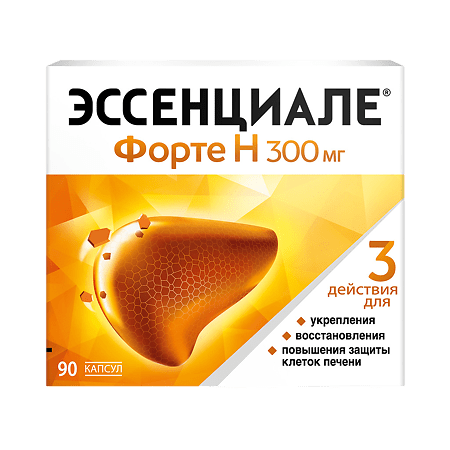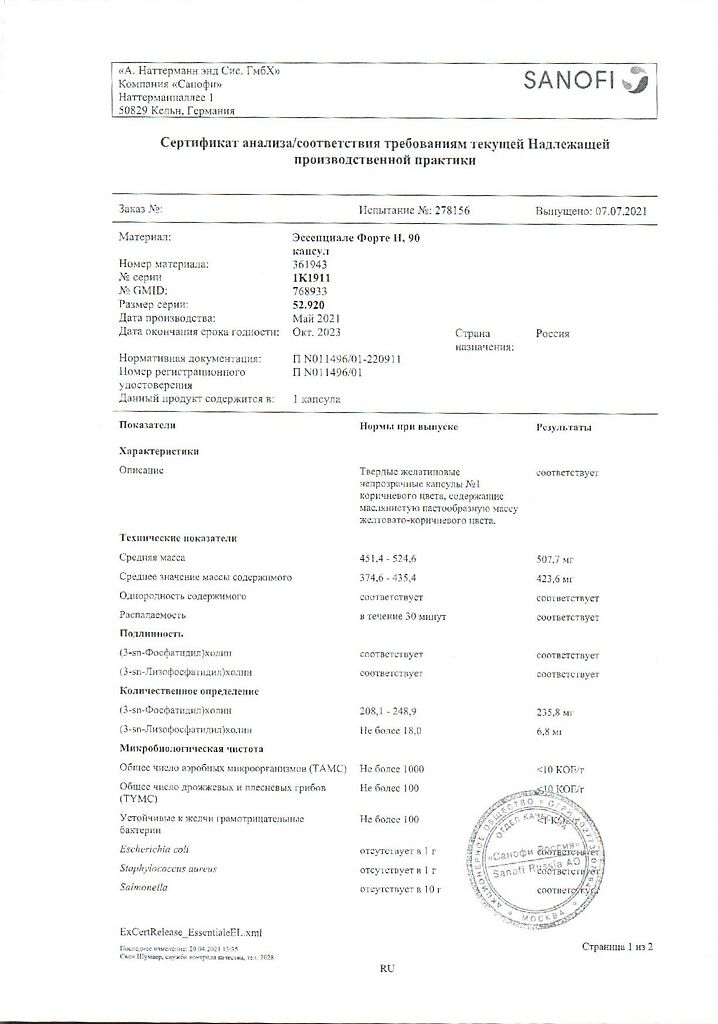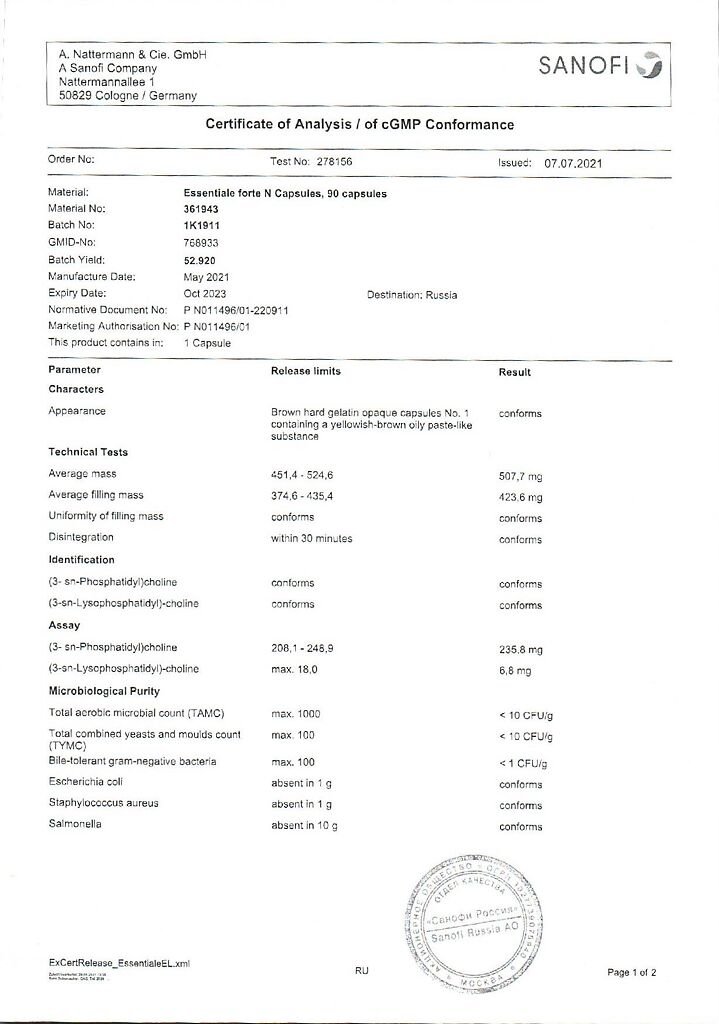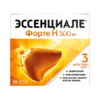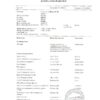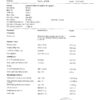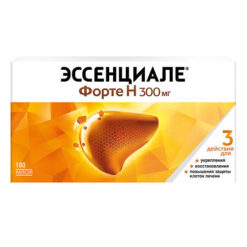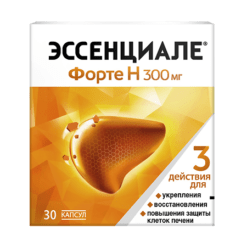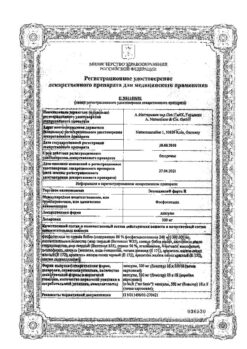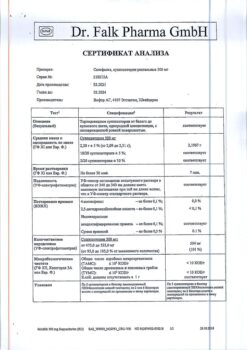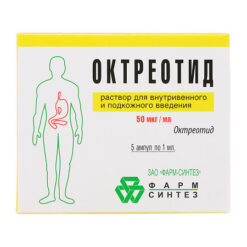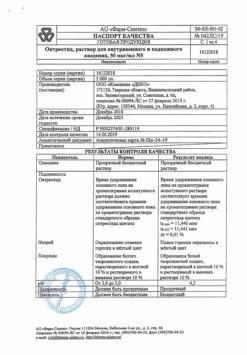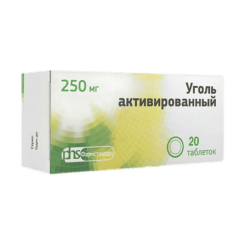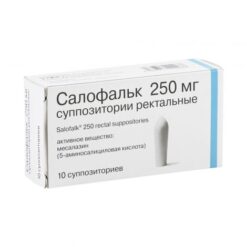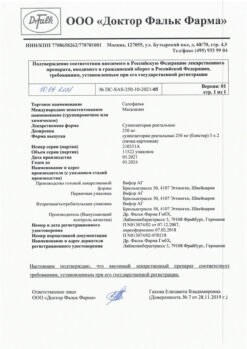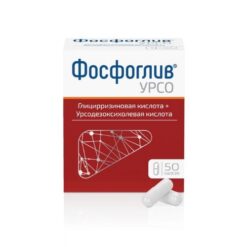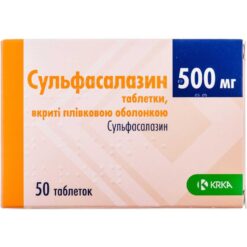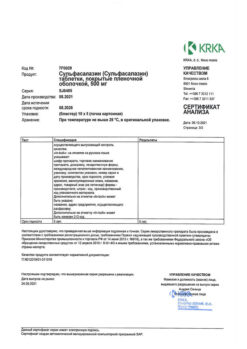No products in the cart.
Essenciale forte N, capsules 300 mg 90 pcs
€45.55 €40.25
Description
Pharmacotherapeutic group: hepatoprotective agent.
ATX code: A05C.
Pharmacological properties
Pharmacodynamics
Essential phospholipids are the basic elements of the structure of cell membrane and cell organelles. In liver diseases there is always damage of liver cell envelopes and their organelles which leads to disorders of activity of associated enzymes and receptor systems, deterioration of functional activity of liver cells and decreased ability to regenerate.
Phospholipids contained in the preparation Essenciale ® forte H correspond in their chemical structure to endogenous phospholipids, but exceed endogenous phospholipids in activity, due to the higher content of polyunsaturated (essential) fatty acids in them. The incorporation of these high-energy molecules into the damaged parts of hepatocyte cell membranes restores the integrity of hepatic cells and promotes their regeneration. Cis-double bonds of their polyunsaturated fatty acids prevent parallel arrangement of hydrocarbon chains in phospholipids of cell membranes, phospholipid structure of hepatocyte cell membranes
“loosens up”, which causes increase of their fluidity and elasticity, improves metabolism. Formed functional blocks increase activity of enzymes fixed on membranes and promote normal, physiological course of the most important metabolic processes.
The phospholipids in Essenciale® forte regulate lipoprotein metabolism by transporting neutral fats and cholesterol to the oxidation sites, mainly by increasing the ability of high-density lipoproteins to bind to cholesterol.
Thereby, there is a normalizing effect on lipid and protein metabolism; on the detoxifying function of the liver; on restoration and preservation of the liver cell structure and phospholipid-dependent enzyme systems; that eventually prevents formation of connective tissue in the liver and promotes natural regeneration of liver cells. When phospholipids are excreted into the bile, the lithogenic index decreases and the bile stabilizes.
In patients with nonalcoholic fatty liver disease the use of essential phospholipids in controlled randomized clinical trials led to a significant reduction in the degree of steatosis.
In clinical and observational studies on the background of Essenciale® Forte H administration in patients with chronic liver disease, relief of general condition and symptoms such as increased fatigue/weakness, decreased appetite, pain or discomfort in the stomach, feeling of rapid satiety, feeling of fullness or heaviness after eating, bloating, nausea were observed. Meaningful improvement of symptoms was noted in the studies after only 4 weeks (30 days) of therapy.
The use of essential phospholipids in controlled and observational studies in patients with psoriasis resulted in regression of psoriatic rashes and reduction of the psoriasis prevalence and severity index (PASI). Adding essential phospholipids to PUVA therapy allowed faster remission while reducing the total dose of ultraviolet irradiation.
Pharmacokinetics
More than 90% of ingested phospholipids are absorbed in the small intestine. Most of them are broken down by phospholipase A to 1-acyl-lysophosphatidylcholine, 50% of which is immediately reverse-acetylated to polyunsaturated phosphatidylcholine during the absorption process in the intestinal mucosa. This polyunsaturated phosphatidylcholine enters the bloodstream with the lymph and from there, mainly in the form bound to high-density lipoproteins, reaches the liver.
Pharmacokinetics studies in humans were performed using radioactively labeled dilinoleoyl phosphatidylcholine (3H and 14C). The choline portion was 3H-labeled, and the linoleic acid residue had 14C as a tag.
The maximum concentration of 3H is reached 6-24 hours after administration and is 19.9% of the administered dose. The half-life of the choline component is 66 hours.
The maximum concentration of 14C is reached 4-12 hours after administration and is up to 27.9% of the prescribed dose. The half-life of this component is 32 hours. In the feces, 2% of the administered dose of 3H and 4.5% of the administered dose of 14C are detected; in the urine, 6% of 3H and only minimal amounts of 14C.
Both isotopes are more than 90% absorbed in the gut.
Indications
Indications
Chronic hepatitis, cirrhosis of the liver, fatty liver of various etiologies, toxic liver damage, alcoholic hepatitis, liver dysfunction in other somatic diseases.
Toxicosis of pregnancy.
Prevention of recurrence of gallstone formation.
Psoriasis (as an adjuvant therapy).
Radiation syndrome.
Pharmacological effect
Pharmacological effect
Pharmacotherapeutic group: hepatoprotective agent.
ATX code: A05C.
Pharmacological properties
Pharmacodynamics
Essential phospholipids are the main elements of the structure of the cell membrane and cellular organelles. In liver diseases, there is always damage to the membranes of liver cells and their organelles, which leads to disruptions in the activity of associated enzymes and receptor systems, deterioration in the functional activity of liver cells and a decrease in the ability to regenerate.
The phospholipids included in the preparation Essentiale® forte N correspond in their chemical structure to endogenous phospholipids, but are superior to endogenous phospholipids in activity due to their higher content of polyunsaturated (essential) fatty acids. The integration of these high-energy molecules into damaged areas of hepatocyte cell membranes restores the integrity of liver cells and promotes their regeneration. The cis-double bonds of their polyunsaturated fatty acids prevent the parallel arrangement of hydrocarbon chains in cell membrane phospholipids, phospholipid structure of hepatocyte cell membranes
“looses”, which increases their fluidity and elasticity, improves metabolism. The resulting functional blocks increase the activity of enzymes fixed on the membranes and contribute to the normal, physiological pathway of the most important metabolic processes.
Phospholipids, which are part of the drug Essentiale® forte, regulate the metabolism of lipoproteins, transferring neutral fats and cholesterol to sites of oxidation, mainly by increasing the ability of high-density lipoproteins to bind to cholesterol.
Thus, there is a normalizing effect on the metabolism of lipids and proteins; on the detoxification function of the liver; to restore and preserve the cellular structure of the liver and phospholipid-dependent enzyme systems; which ultimately prevents the formation of connective tissue in the liver and promotes the natural restoration of liver cells. With the excretion of phospholipids into the bile, the lithogenic index decreases and the bile is stabilized.
In patients with non-alcoholic fatty liver disease, the use of essential phospholipids in controlled randomized clinical trials led to a significant reduction in the degree of steatosis.
In clinical and observational studies, with the use of Essentiale Forte N in patients with chronic liver diseases, relief of general condition and symptoms was observed, such as increased fatigue/weakness, decreased appetite, abdominal pain or discomfort, a feeling of rapid satiety, a feeling of fullness or heaviness after eating, bloating, nausea. Significant improvement in symptoms was observed in studies after only 4 weeks (30 days) of therapy.
The use of essential phospholipids in controlled and observational studies in patients with psoriasis led to regression of psoriatic rashes and a decrease in the psoriasis prevalence and severity index (PASI). The addition of essential phospholipids to PUVA therapy allowed for faster remission while reducing the total dose of ultraviolet radiation.
Pharmacokinetics
More than 90% of phospholipids taken orally are absorbed in the small intestine. Most of them are cleaved by phospholipase A to 1-acyl-lysophosphatidylcholine, 50% of which is immediately reverse acetylated into polyunsaturated phosphatidylcholine during the absorption process in the intestinal mucosa. This polyunsaturated phosphatidylcholine enters the bloodstream through the lymph and from there, mainly bound to high-density lipoproteins, enters the liver.
Pharmacokinetic studies in humans were performed using radiolabeled dilinoleyl phosphatidylcholine (3H and 14C). The choline moiety was labeled with 3H, and the linoleic acid residue had 14C as its label.
The maximum concentration of 3H is reached 6-24 hours after administration and is 19.9% of the prescribed dose. The half-life of the choline component is 66 hours.
The maximum concentration of 14C is reached 4-12 hours after administration and is up to 27.9% of the prescribed dose. The half-life of this component is 32 hours. In feces, 2% of the administered dose of 3H and 4.5% of the administered dose of 14C are found, in urine – 6% of 3H and only a minimal amount of 14C.
Both isotopes are more than 90% absorbed in the intestine.
Special instructions
Special instructions
The drug Essentiale® forte N can cause severe allergic reactions, as it contains soybean oil.
Patients should be informed that taking Essentiale® forte N does not replace the need to avoid the damaging effects of certain substances on the liver (for example, alcohol).
Maintenance therapy with phospholipids is justified only if subjective signs of the condition improve during treatment. Patients should be advised to consult a physician if symptoms worsen or other unclear symptoms occur.
Impact on the ability to drive vehicles and machinery
The drug Essentiale® forte N does not affect the ability to drive vehicles or operate machinery.
Active ingredient
Active ingredient
Phospholipids
Composition
Composition
1 capsule contains:
active ingredient: phospholipids from soybeans (synonyms: EPL, essential phospholipids) – 300 mg, containing 80% phosphatidylcholines – 240 mg;
excipients: solid fat – 57,000 mg, soybean oil – 36,000 mg, hydrogenated castor oil – 1,600 mg, ethanol 96% – 8,100 mg, ethylvanillin – 1,500 mg, 4-methoxyacetophenone – 0.800 mg, α-tocopherol – 0.750 mg.
Capsule composition: gelatin – 67.945 mg, purified water – 11.495 mg, titanium dioxide (E 171) – 0.830 mg, yellow iron oxide dye (E 172) – 2.075 mg, black iron oxide dye (E 172) – 0.332 mg, red iron oxide dye (E 172) – 0.198 mg, sodium lauryl sulfate
– 0.125 mg.
Pregnancy
Pregnancy
Pregnancy
The use of Essentiale® forte N during pregnancy is not recommended without medical supervision. There is not enough research.
Breastfeeding period
To date, no risks have been identified when using products containing soy during breastfeeding. However, due to the lack of relevant studies involving women during breastfeeding, the use of Essentiale® forte N during breastfeeding is not recommended.
Contraindications
Contraindications
Hypersensitivity to phosphatidylcholine, soy, soybeans or other ingredients of the drug.
Children under 12 years of age (lack of sufficient evidence base).
Side Effects
Side Effects
Essentiale® forte N is usually well tolerated by patients.
According to the World Health Organization (WHO), side effects are classified according to their frequency as follows: very common (≥1/10), common (≥1/100, <1/10), uncommon (≥1/1000, <1/100), rare (≥1/10000, <1/1000) and very rare (<1/10000); frequency unknown (frequency cannot be determined from available data).
From the gastrointestinal tract
Not known: stomach discomfort, soft stools, or diarrhea.
From the skin and subcutaneous tissues
Frequency unknown: allergic reactions (rash, exanthema, urticaria), itching.
Interaction
Interaction
The interaction of the drug Essentiale® forte N with anticoagulants cannot be excluded. It is necessary to adjust the dose of anticoagulants when used together with Essentiale® forte N.
Overdose
Overdose
The use of Essentiale® forte N in doses exceeding the recommended ones may lead to increased side effects.
Storage conditions
Storage conditions
Store at a temperature not exceeding 21 °C. Keep out of the reach of children.
Shelf life
Shelf life
For capsules packed in a blister made of PVC and aluminum foil – 3 years.
For capsules packed in a blister made of PVC/PTFE and aluminum foil or PVC/PE/PVDC and aluminum foil – 30 months.
Do not use the drug after the expiration date indicated on the package.
Manufacturer
Manufacturer
A.Nattermann & Hsieh. GmbH, Germany
Additional information
| Shelf life | For capsules packed in a blister of PVC and aluminum foil – 3 years. For capsules packed in blister of PVC/PTFE and aluminum foil or PVC/PE/PVC and aluminum foil – 30 months. Do not use the drug after the expiration date stated on the package. |
|---|---|
| Conditions of storage | Store at a temperature not higher than 21 ° C. Keep out of reach of children. |
| Manufacturer | Sanofi A. Nuttermann & Sie GmbH, Germany |
| Medication form | capsules |
| Brand | Sanofi A. Nuttermann & Sie GmbH |
Other forms…
Related products
Buy Essenciale forte N, capsules 300 mg 90 pcs with delivery to USA, UK, Europe and over 120 other countries.

